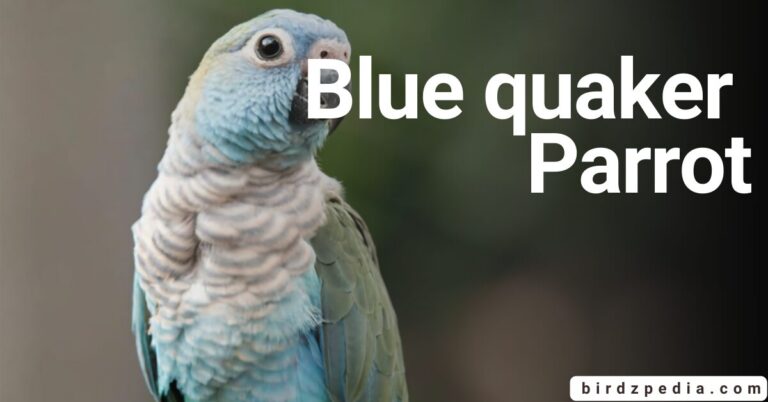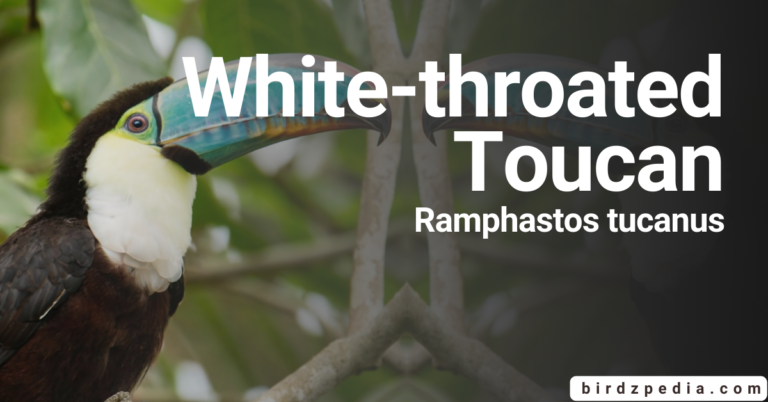Channel-billed toucan: [Ramphastos vitellinus] Unlocking Nature’s Palette
Scientific Classification
| Kingdom | Phylum | Subphylum | Class | Order | Family | Genus | Species |
|---|---|---|---|---|---|---|---|
| Animalia | Chordata | Vertebrata | Aves | Piciformes | Ramphastidae | Ramphastos | vitellinus |
Channel-billed toucan
Within the Ramphastidae family, the Channel-billed Toucan (Ramphastos vitellinus) is closely related to passerine birds. Its habitat is found on the Caribbean island of Trinidad and stretches throughout South America’s tropical areas, extending as far south as central Bolivia and southern Brazil.
Within its area, this unique bird is recognized for its wide, multicolored bill and its presence in a variety of lush, diverse surroundings.

Summary
- Habitat:
- found in tropical South America (southern Brazil to central Bolivia) and on the Caribbean island of Trinidad.
- Distinctive Feature:
- Large, colorful bill.
- Behavior:
- Near-passerine bird.
- Food Habits:
- eating just fruits, insects, and tiny vertebrates; an omnivorous diet.
- Lifespan:
- Typically around 15 to 20 years in the wild.
- Speed:
- Its movement across its habitat is usually slow; it is not noted for its fast flying.
- Geographical Extent:
- spans tropical South America and the Caribbean island of Trinidad.
- Reproduction:
- Cavity nesting and rearing offspring in family groups are breeding practices.
- Conservation Status:
- Presently, there are no significant conservation issues; population trends are constant.
Taxonomy and systematics
Subspecies
| Subspecies | Scientific Name | Description | Range |
|---|---|---|---|
| Yellow-ridged toucan | Ramphastos vitellinus culminatus | Originally described as a separate species. Found in upper Amazonia from western Venezuela to northern Bolivia. | Western Venezuela to northern Bolivia |
| Channel-billed toucan | Ramphastos vitellinus vitellinus | Found in Venezuela, the Guianas, northern Brazil, and Trinidad. | Venezuela, the Guianas, northern Brazil, Trinidad |
| Ariel toucan | Ramphastos vitellinus ariel | Originally described as a separate species. Found in central and eastern Brazil south of the Amazon River. | Central and eastern Brazil south of the Amazon River |
Previously recognized as separate species, these subspecies now freely interbreed wherever their ranges overlap, along with the citron-throated toucan. Of them, R. v. ariel shows a stronger genetic resemblance to R. v. culminatus than to the nominate, prompting some scientists to speculate that they may be
approaching the status of a separate species. As previously said, if divided, R. v. ariel would be referred to as Ramphastos ariel ariel and R. a. culminatus. Remarkably, there is a solitary group in eastern Brazil that shares visual similarities and is conventionally linked to R. v. ariel.
Molecular study, however, points to its extended isolation, suggesting that it may constitute an as-yet-undescribed subspecies or even a separate species (Weckstein, 2005).

Description
Like its brother toucans, they are distinguished by its large bill and brightly colored markings. The bill itself is 9–14 cm (3½–5½ in) long, with an average length of 48 cm (19 in). The Channel-billed Toucan usually weighs between 300 and 430 g (11–15 oz).
The Ramphastos vitellinus is a visually arresting and immediately identifiable bird species due to its unique combination of size, colors, and bill measurements.
- Nominate Race (R. v. vitellinus):
- Upperparts, belly, tail, and most of the bill are black.
- Uppertail and undertail coverts are red.
- Bare eye-patch and bill base are blue.
- Throat is white, central breast is yellow-orange fading to white laterally.
- Lower breast sharply contrasts with a broad transverse red band.
- Iris is dark brownish.
- Found in the north-eastern part of the species’ range.
- Race Culminatus:
- Resembles the nominate but has a yellow base of the upper mandible and ridge to its bill.
- Orange-yellow uppertail coverts.
- Throat and breast are white (occasionally tinged yellow).
- Narrow red band separates the black belly from the breast.
- Occurs in the eastern and south-central part of the species’ range.
- Very similar to, and easily confused with, Cuvier’s toucan (Ramphastos tucanus cuvieri).
- Race Ariel:
- Resembles the nominate but has a yellow base of its bill.
- Skin around the pale blue eye is red.
- Entire throat and chest are orange.
- Occurs in the south-east Amazon.
- Unnamed population from the coastal regions of eastern Brazil is virtually identical.
- Race Citreolaemus:
- Resembles culminatus but has a clear yellow tinge to the throat.
- Green tinge to the otherwise yellow culmen.
- Yellow-orange patch at the very base of the bill.
- Pale bluish iris.
- Occurs in northern Colombia and north-western Venezuela.
Due to continuous hybridization, individuals exhibiting intermediate features between the previously mentioned races are regularly observed in locations where the ranges of several subspecies overlap. Notably, in order to acknowledge their distinctive characteristics, some of these mixed populations have
been given the status of subspecies. For example, populations in south-central Brazil are classified as pintoi, but populations in northeastern Brazil are designated as the subspecies theresae; these designations denote culminatus-ariel intergrades.
This phenomena emphasizes how toucan populations are dynamic and how evolutionary processes have shaped their varied traits.

Species in same Genus
| Species Name | Common Name |
|---|---|
| Ramphastos toco | Toco Toucan |
| Ramphastos tucanus | White-throated Toucan |
| Ramphastos cuvieri | Cuvier’s Toucan |
| Ramphastos brevis | Choco Toucan |
| Ramphastos dicolorus | Red-breasted Toucan |
| Ramphastos sulfuratus | Keel-billed Toucan |
| Ramphastos vitellinus | Channel-billed Toucan (Nominate) |
Habitat
They are inhabits in a variety of habitats, from forests to woods, and is frequently observed in a range of ecosystems. While it can tolerate dry conditions, it seems to favor humid areas, especially those near rivers. Although it is primarily found in lowland areas, this versatile bird can
sometimes be seen at higher altitudes, up to 1,700 m (5,600 ft). The Ramphastos vitellinus adaptability in choosing its home demonstrates its capacity to flourish in a range of ecological contexts.

Behavior
Food
As an arboreal fruit-eater, they mostly feeds on a range of fruits, with a specific preference for lipid-rich ones like Virola and Euterpe palm fruits. Its food consists of frogs, eggs, tiny reptiles, and insects in addition to fruits. It is known that toucans eat the fruits of trees like Cecropia,
Ficus, and Nectandra. They may modify their diet to include papaya, mangoes, avocados, and peppers in response to human encroachment into their natural environment. The Ramphastos vitellinus versatility and opportunistic feeding behavior are reflected in this wide range of food sources.
Breeding
Both parents take an active role in raising their children. The white eggs take eighteen days to hatch; they are usually laid in a high, open tree hollow. Both parents alternately sit on the eggs for the duration of the 15–16 day incubation period, though they occasionally show signs of frustration by leaving them
unprotected. The baby toucans remain in the nest after they are born blind and naked. About the third week, their eyes open to show off the unique pads on their heels that shield them from the uneven floor of the nest. Around the fourth week,
the young begin to acquire feathers, but for about eight weeks, they are helpless and confined to the nest, depending on both parents for food. Following this time, the fledglings become independent and, depending on their size, begin to leave the nest after 40 to 50 days.
The nurturing dynamics of the Ramphastos vitellinus throughout the critical early phases of its offspring’s development are highlighted by this all-inclusive parental care approach.

Sound
The Billed Channel Sharp, yelping, or barking notes are included in the loud, croaking sounds that toucans are known for. They use these vocalizations to communicate with one another in their social groupings, particularly when engaging in tasks like feeding and territory defense.
Threats
- Habitat loss as a result of urbanization and deforestation.
- The trading in illegal pets is dangerous.
- Foraging areas are impacted by agricultural expansion.
- The availability of appropriate habitats and food sources is impacted by climate change.
- Hunting as perceived agricultural pests or for meat or feathers.
Common Names in Different Languages
| Language | Common Name |
|---|---|
| English | Channel-billed Toucan |
| Spanish | Tucán Pico Canal |
| French | Toucan à bec rouge |
| Portuguese | Tucano-de-bico-largo |
| German | Kanalschnabeltukan |
| Dutch | Kanaalsnaveltoekan |
| Italian | Tucano dal becco canalizzato |
| Russian | Канальный тукан (Kanal’nyy tukan) |

FAQs
- What is the scientific name of the Channel-billed Toucan?
- Ramphastos vitellinus.
- Where is the natural habitat of Ramphastos vitellinus.?
- found in tropical South America, stretching from southern Brazil to central Bolivia, and on the Caribbean island of Trinidad.
- How large is the Ramphastos vitellinus.?
- usually measures 48 cm (19 in) in length, with a bill that varies from 9 to 14 cm (3½ to 5½ in).
- What is the distinctive feature of the Channel-billed Toucan?
- Distinguished for its huge, vivid bill.
- Are Ramphastos vitellinus. migratory?
- They spend the entire year within their home range and are often non-migratory.
- What is their primary diet?
- In addition to being arboreal fruit eaters, they also devour frogs, eggs, insects, and tiny reptiles.
- How do they contribute to the soundscape of their habitat?
- Paid by channel The loud, characteristic calls of toucans—which can include sharp, yelling or barking notes—are well-known.
- What is their nesting behavior?
- White eggs are laid in a high, open tree hole during the nesting period, and both parents actively care for the young.
- How long do the young remain dependent on their parents?
- For almost eight weeks, the baby toucans are defenseless and unable to leave the nest; they must be fed by both parents.
- What are the threats to them?
- The loss of habitat from deforestation, the illicit pet trade, increased agricultural production, and the effects of climate change on their habitats are among the threats.






![Black Oystercatcher [Haematopus bachmani] Habitat, Characteristics, Facts](https://birdzpedia.com/wp-content/uploads/2023/12/Black-Crow-768x402.png)
![Great Frigatebird:[Fregata minor] Look of Nature’s Aviator](https://birdzpedia.com/wp-content/uploads/2024/01/Rosy-Billed-pochard-768x402.png)